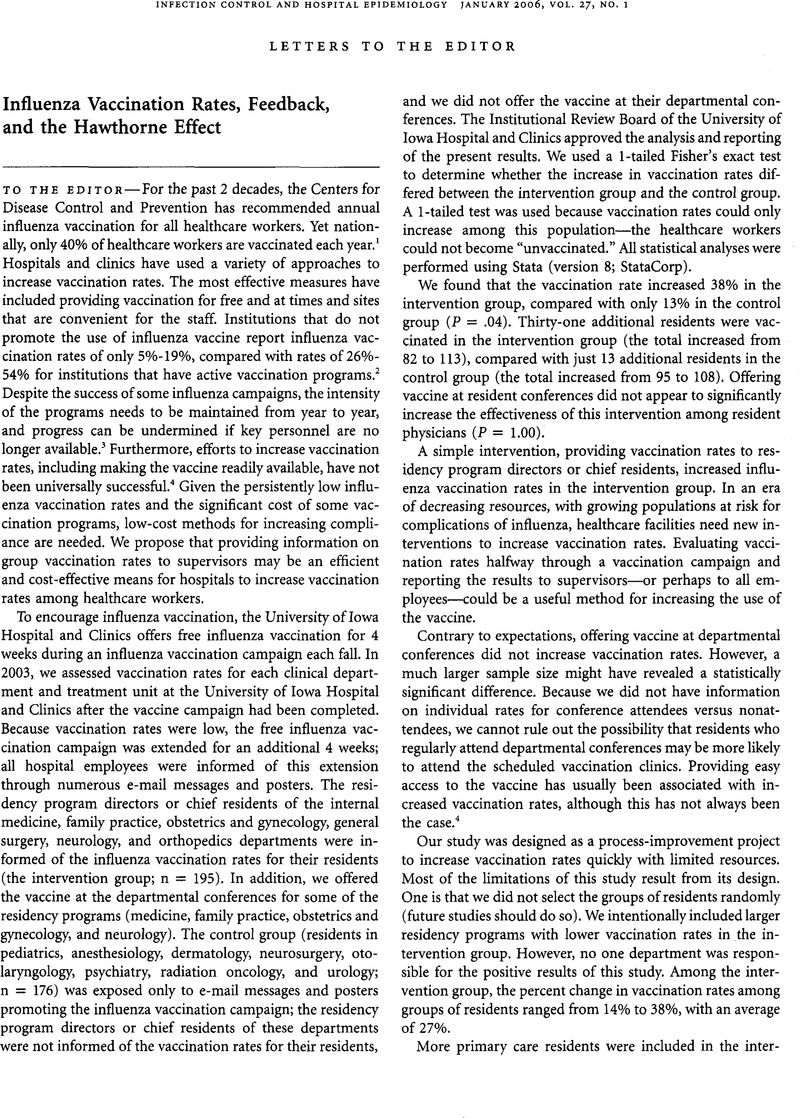Crossref Citations
This article has been cited by the following publications. This list is generated based on data provided by Crossref.
Duclos, Antoine
Bouhour, Damien
Baptiste, Charles
Launay, Odile
and
Guiso, Nicole
2008.
Assessment of individual vaccine status in a vaccinology experts' group.
Journal of Evaluation in Clinical Practice,
Vol. 14,
Issue. 4,
p.
610.
Mehta, M.
Pastor, C.A.
and
Shah, B.
2008.
Achieving optimal influenza vaccination rates: a survey-based study of healthcare workers in an urban hospital.
Journal of Hospital Infection,
Vol. 70,
Issue. 1,
p.
76.
Polgreen, Philip M.
Polgreen, Linnea A.
Evans, Thomas
and
Helms, Charles
2009.
A Statewide System for Improving Influenza Vaccination Rates in Hospital Employees.
Infection Control & Hospital Epidemiology,
Vol. 30,
Issue. 5,
p.
474.
Polgreen, Philip M.
Tassier, Troy Leo
Pemmaraju, Sriram Venkata
and
Segre, Alberto Maria
2010.
Prioritizing Healthcare Worker Vaccinations on the Basis of Social Network Analysis.
Infection Control & Hospital Epidemiology,
Vol. 31,
Issue. 9,
p.
893.
Helms, Charles
Polgreen, Philip
Polgreen, Linnea
Evans, Thomas
Roberts, Lance L.
Clabaugh, Gerd
and
Quinlisk, Patricia
2011.
Voluntary reporting of employee influenza vaccination rates by acute care hospitals in Iowa: The impact of a four year provider-based statewide performance improvement project.
Vaccine,
Vol. 29,
Issue. 18,
p.
3483.
Stewart, Alexandra M.
2012.
Using State Laws to Vaccinate the Health-Care Workforce.
Public Health Reports,
Vol. 127,
Issue. 2,
p.
224.





